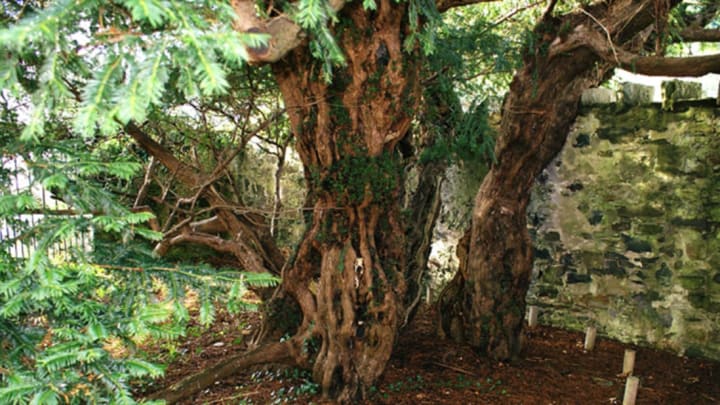One of the oldest trees in the United Kingdom has surprised scientists by undergoing a sex change—a few thousand years into its existence.
Fortingall Yew in Perthshire is believed to be about 3000 to 5000 years old, and has always been recorded as male. That identification is easy to spot in autumn months, when male yews have little spherical pollen producers and females sprout red berries.
Scientists at the Royal Botanic Garden in Edinburgh recently noticed three of those berries on a lofty branch of the ancient tree, the likes of which had never been spotted before. The small fruits are being studied now, and their seeds will become part of a conservation project.
While a sex change in a yew tree isn’t unprecedented, Dr. Max Coleman of the Royal Botanic Garden told The Guardian, this particular gender swap is notable because the tree itself is so distinguished.
"The sex change isn’t the amazing bit in this case, it’s the fact it’s this particular tree," Coleman said.
The gender swap is just the latest chapter in a storied history for the ancient tree that might be the oldest organism in Europe. The Fortingall Yew is a survivor. It has withstood the elements, time, and even tourists, who once took clippings from it as souvenirs. The tree is now protected by a wall, having lost its center and one side years ago.
